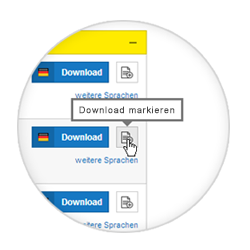Level measurement in glass vessels with 80 GHz radar sensor
De Dietrich Process Systems, a company specializing in QVF® glass equipment, uses the new high-frequency radar based level technology to allow its users to significantly improve process monitoring.
In addition to the many other advantages of the new radar sensors, two aspects make level measurement with 80 GHz in glass vessels particularly interesting: the small process fittings and the ability to measure through non-conductive materials. Glass vessels are often much smaller than the vessels commonly used in the chemical industry, which are made of other materials. Not infrequently, new processes are tested on a small scale “pilot plants” and then later implemented on an industrial scale. Accurate, reliable process monitoring in both scenarios is required, but particularly on the smaller scale is exactly where many traditional measuring systems reach their limits. On the one hand, the process instruments must have a high chemical resistance that should correspond as closely as possible to that of borosilicate glass 3.3 or PTFE. On the other hand, the process fittings on these vessels are usually smaller than DN 100. VEGAPULS 64 radar sensors meet both requirements.
Small process fittings thanks to higher transmission frequency
PTFE, a highly resistant process separation material
Connections to glass flanges are made with PTFE seals and loose flange rings are made of stainless steel or plastic. Since radar signals can penetrate plastics such as PTFE almost without any attenuation, VEGA developed, in partnership with De Dietrich Process Systems, an adapter that can be easily mounted on the existing process fitting of a QVF® glass vessel. To make the dimensions of the adapter optimal for use with radar technology and its signal reflections, VEGA simulated and optimized the shape of the adapter with special software. The result is a radar sensor with a high-resistance PTFE process fitting that can be mounted directly to the glass flange of a glass vessel. It delivers a measured value accurate to the millimetre, regardless of the processed medium, and unaffected by the wide variety of process conditions.
“When VEGA launched its 80-GHz radar sensors on the market, we were very curious to see if they would also be suitable for the QVF® glassware from De Dietrich Process Systems. Glass has – in comparison to the materials usually used for process or storage tanks – completely diff erent properties. However, we worked in a very effi cient and goal oriented way with VEGA, to create the optimum adapter for our glass vessels. And the eff ort has paid off : we found a simple and reliable means of connecting VEGA sensors to the glass fl anges of our QVF® SUPRA Line. The solutions we have designed are also promising for the application of other VEGA sensors for pressure measurement and point level detection.”
Claudius Hansel, Measurement & Control Technician QVF®, De Dietrich Process Systems
Products
Industries

Chemical

Pharmaceutical
Export this article
Download as PDFShare this article
Comments ({{comments.length}})
{{getCommentAuthor(comment, "Anonymous")}} {{comment.timestamp | date : "dd.MM.yyyy HH:mm" }}
{{comment.comment}}








